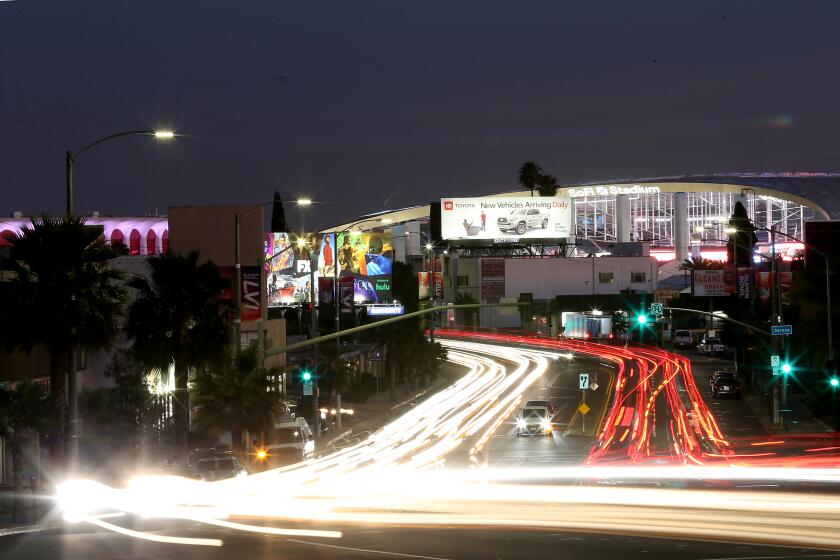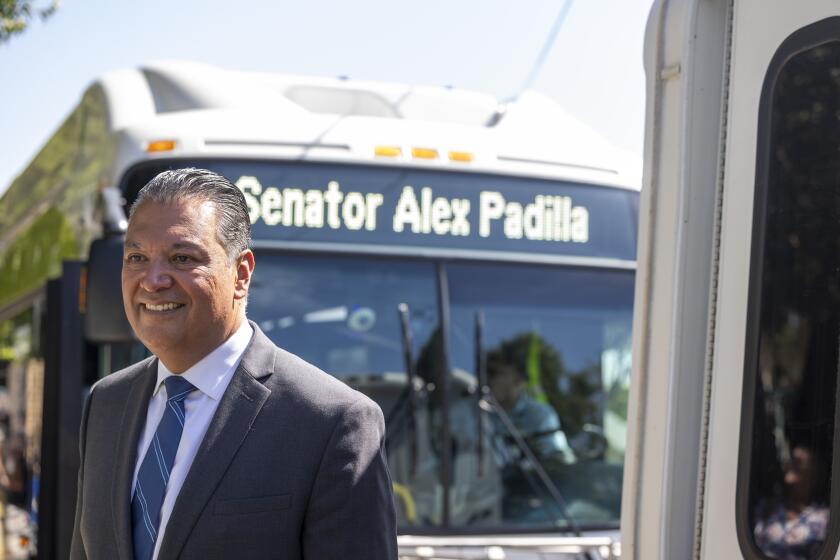Survey Finds 86% of O.C. Commuters Go It Alone
Fostered in part by anti-pollution regulations designed to lure lone drivers out of their cars, 22% of Southern Californians say they now commute by car pool, bus, bicycle or foot--a significant increase over last year, a survey by Commuter Transportation Services Inc. shows.
However, in its third annual State of the Commute report, CTS, the nonprofit group that operates the Commuter Computer ride-sharing service, says Orange County has the highest proportion of people commuting alone, 86%, and the region’s worst traffic congestion.
The report, which is scheduled to be released today, is based on a telephone survey of 2,568 commuters in Los Angeles, Orange, Riverside, San Bernardino and Ventura counties. It found the region is bucking a national trend that saw alternative means of commuting fall one-third in the last decade. During that time, alternative commuting in Southern California climbed by nearly 30%.
Surveyors queried respondents about their “primary” way of commuting--the way they travel three or more days a week--as well as about the lengths of their commutes in miles and minutes. They also explored commuters’ perceptions of whether traffic is improving or worsening.
The survey found that despite a population boom in Southern California, the amount of time spent commuting last year did not increase. Commuters in Orange, Los Angeles and Ventura counties averaged half an hour to and from work, and commuters in Riverside and San Bernardino counties took slightly longer.
One in three San Bernardino commuters drives to a job outside that county, the report found, and drivers in that and Riverside County face the region’s longest commutes--21 miles, more than double the national average. The average commute in Los Angeles and Orange counties is 15.5 miles.
Surprisingly, about one-third of all drivers in Orange and Los Angeles counties rated freeway traffic as good, despite growing concern about congestion.
Commuting patterns reflected sex and status factors, with male corporate executives the least likely to consider getting out of their cars. About 19% of men commute by car pool, bus or other alternative means, whereas 24% of women share a ride to work.
Differences are even sharper among social classes: About 7% of senior managers use some kind of alternative means, whereas 33% of maintenance workers do, primarily the bus. Secretarial and clerical workers are the most likely car-poolers--20% choose to do so.
Clean-air programs designed to reduce auto emissions are paying dividends on the freeways, too. Alternative commuting is most popular at companies required by anti-pollution regulations to promote ride-sharing.
The South Coast Air Quality Management District requires companies with 100 or more workers to promote, even subsidize, alternatives to driving alone. Some firms offer gifts, shorter hours or other benefits to car-poolers or pay part of the cost of bus passes. Fully 27% of employees at these firms use alternatives, compared to 18% at other companies.
Lone commuters were very selective about which alternatives they would consider, favoring car pools and van pools over buses and trains. However, commuter trains rated consistently more attractive than buses among these drivers, even though trains are now less common, less convenient and usually more expensive than buses.
Commuter Transportation Services is funded by the California Department of Transportation and other government agencies.
More to Read
Sign up for Essential California
The most important California stories and recommendations in your inbox every morning.
You may occasionally receive promotional content from the Los Angeles Times.






